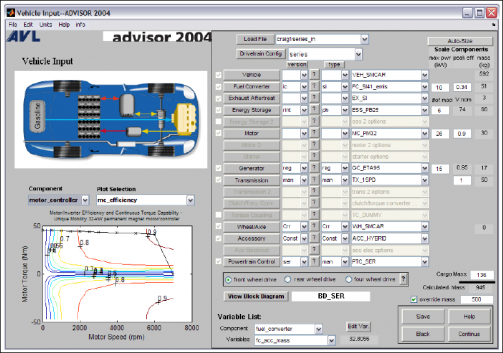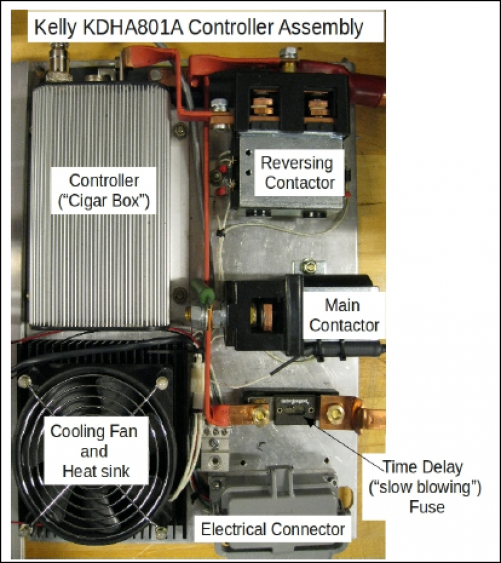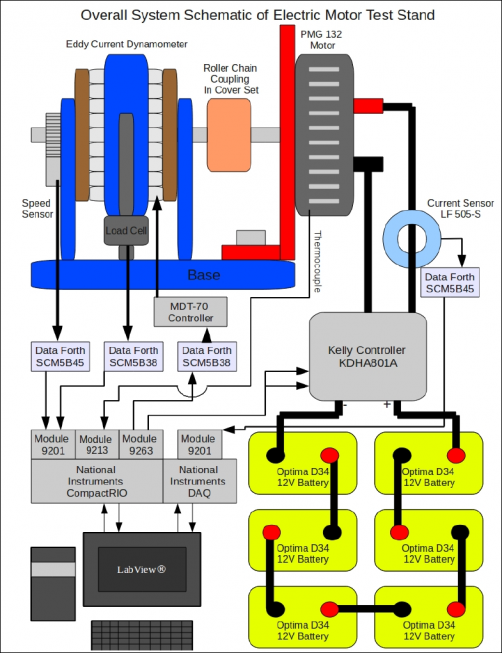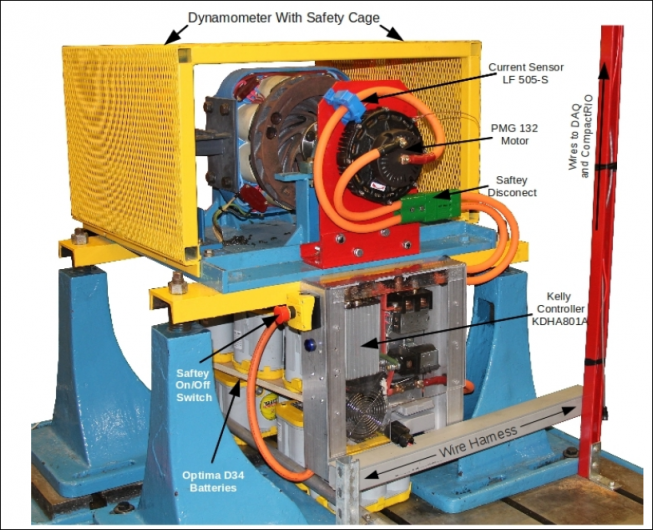Electric Motor Testing
THE COOPER UNION FOR THE ADVANCEMENT OF SCIENCE AND ART
ALBERT NERKEN SCHOOL OF ENGINEERING
Design and Development of an Experimental Test Stand for
Electric and Hybrid Electric Vehicle Powertrains
by
Craig Ginsberg
A thesis submitted in partial fulfillment
of the requirements for the degree of
Master of Engineering
Advisor
Prof. George Delagrammatikas
Abstract
Because of the growing need to reduce pollution and save money on fuel, electric and hybrid
electric vehicle development is a clear and proven trend for the world’s future vehicles. To further
stimulate hybrid vehicle growth, intercollegiate competitions, like the Formula Hybrid Competition,
challenge engineering students around the country to design and implement a goal-oriented vehicle.
This work provides a preliminary body of research on various drivetrain types and components such as
electric motors, motor controllers, batteries, generators, and gasoline engines. Using this knowledge, a
design methodology is executed to provide the sizing, selection, and implementation of an electric
powertrain in a controlled laboratory test stand. Along the way, drivetrain components are sized and
chosen using a combination of hand calculations and computer simulations. Once a drivetrain design
was fully identified and sourced, the drive system was built on a test stand. Preliminary testing and
shakedown were performed to verify the compatibility of the system and to prepare it for future studies.

Figure 1: Using AVL ADVISOR to size powertrain components for a Formula Electric racecar
Various computer programs, electronic hardware, and mechanical systems including an eddy current
dynamometer were used to help the test stand perform its functions. The powertrain test stand must
control and measure the motor performance variables necessary for complete motor characterization
such as speed, torque, voltage, and current. The test stand will serve future vehicle design efforts and
student educational functions in the engine testing lab at The Cooper Union. The main objective of this
project was to provide a safe, flexible, and instructional test stand to serve the anticipated needs of
future vehicle design efforts at Cooper Union.

Figure 2: The motor controller setup

Figure 3: Motor test stand schematic

Figure 4: The completed experimental test stand

